According to the latest information released by the Ministry of Industry and Information Technology, the cumulative supporting capacity of power batteries in China exceeds 131GWh (GWW), and the industrial scale ranks first in the world. Among them, the new energy vehicles produced during the promotion period of the “Ten Cities and Thousands of Vehicles Project†produced a total of about 12,600 tons of decommissioned power batteries.
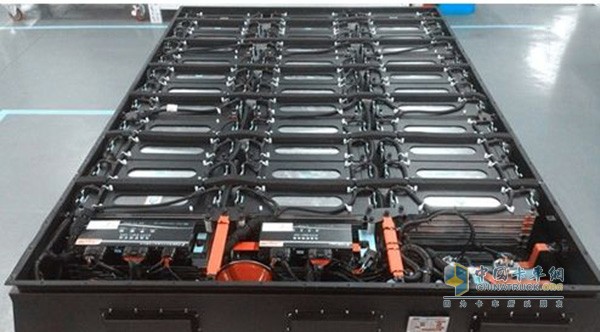 China's power battery cumulative matching exceeds 131GWh
China's power battery cumulative matching exceeds 131GWh
With the rapid development of China's new energy automobile industry, the use of power batteries has also increased. It is worth noting that after a large number of decommissioning of power batteries, they will threaten public safety and cause irreversible environmental pollution without proper disposal and maximum value utilization. Therefore, China is accelerating the establishment of a power battery recycling system, and has already formed a new energy vehicle power battery recycling industry.
Speed ​​up the use of ladders
The website of the Ministry of Industry and Information Technology recently issued a document saying that China Railway Tower Company stopped purchasing lead-acid batteries in 2018 and vigorously promoted the use of lithium batteries. It has used about 1.5GWh of ladder batteries in about 120,000 base stations in 31 provinces, autonomous regions and municipalities across the country. Replace the lead-acid battery by about 45,000 tons.
The ladder battery used by the company is the power battery for the retirement of new energy vehicles. According to reports, under normal circumstances, when the capacity of new energy vehicle power battery is reduced to less than 80%, it will not fully meet the power demand of the car, but it can still be used in other fields.
In fact, if the decommissioned power battery fails to enter the ladder utilization queue without scientific treatment, it will threaten public safety and cause serious pollution to the ecological environment. At the same time, it is also a waste of metal resources. According to relevant experts from China Automotive Technology and Research Center Co., Ltd., improper disposal of used power batteries not only has potential safety hazards such as electric shock, explosion and corrosion, but also causes serious heavy metal and electrolyte pollution.
Experts predict that China's decommissioned power storage batteries will be about 200,000 tons in 2020, and will reach 780,000 tons by 2025. It can be said that the power battery still faces great pressure.
However, one of the major advantages of China's power battery recycling is that the distribution of decommissioned batteries is relatively concentrated. Previously, in order to promote the development of new energy vehicles, the Ministry of Science and Technology, the Ministry of Finance and other ministries and commissions jointly launched the “Ten Cities and Thousands of Energy Saving and New Energy Vehicle Demonstration and Application Projectsâ€. It is planned to develop 10 cities every year in about 3 years. Each city launched 1,000 new energy vehicles to carry out demonstration operations, and finally selected three batches of 25 pilot cities. Therefore, today's retired power batteries are also concentrated in cities with strong promotion of new energy vehicles such as Shenzhen, Hefei and Beijing.
The recycling system is accelerating
In 2018, the Ministry of Industry and Information Technology, the Ministry of Science and Technology, the Ministry of Ecology and Environment, the Ministry of Transport, the Ministry of Commerce, the General Administration of Market Supervision, and the Energy Bureau issued the Interim Measures for the Management of the Recycling and Utilization of Power Battery for New Energy Vehicles, and established a recycling management mechanism. Promote the establishment of recycling systems.
In order to clarify the requirements for traceability information collection, the new energy vehicle national monitoring and power battery recycling and traceability integrated management platform is also online. At present, there are 393 automobile manufacturers, 44 scrap car recycling companies, 37 ladder enterprises and 42 recycling companies to join the platform.
The Ministry of Industry and Information Technology has also determined to conduct pilot projects in 17 regions including Beijing-Tianjin-Hebei and Shanghai, as well as China Tower, actively cultivating benchmark enterprises and exploring a diversified recycling model with strong technical economy and resource-friendly environment. A total of 3,204 recycling service outlets have been established in 45 companies including Beiqi New Energy and GAC Mitsubishi, mainly in the areas with high holdings of new energy vehicles in the Beijing-Tianjin-Hebei, Yangtze River Delta, Pearl River Delta and Central China.
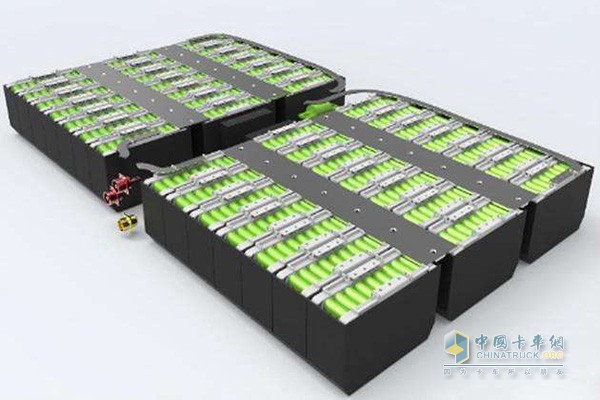 About 126,000 tons of decommissioned power batteries during the promotion of the “Ten Cities and Thousand Vehicles Projectâ€
About 126,000 tons of decommissioned power batteries during the promotion of the “Ten Cities and Thousand Vehicles Projectâ€
At the same time, companies such as automobile manufacturing, battery production and comprehensive utilization are actively conducting step-by-step utilization tests in areas such as backup and energy storage. In general, the market potential of the echelon utilization is still very large, and it has become a hot spot for the development of the industry. Some enterprises are exploring new business models such as “selling for sale†in the field of echelon utilization.
Among them, the State Grid built a demonstration of lithium manganese oxide battery energy storage system in Daxing and Zhangbei, Beijing, and established a decommissioning battery sorting evaluation technology platform to develop an efficient and reliable battery management system.
Beijing Artisan has developed a cascade of optical energy storage systems and is building a power battery pack evaluation system based on big data. Beijing Pride and BAIC have cooperated in the implementation of energy storage power station projects and containerized energy storage projects, with a cumulative utilization of about 75MWh.
Shenzhen BYD, Guoxuan Hi-Tech and other enterprises use decommissioned power batteries to produce battery products for the use of electricity in the field of backup. Wuxi GEM and SF Company explored the use of batteries for urban logistics vehicles, and Zhongtianhong Lithium promoted the use of batteries in sanitation and sightseeing vehicles through the “sale and sale†model.
Industry experts suggest that the use of decommissioned power battery ladders should be concentrated in the field of energy storage and energy preparation, and should not be transferred to low-speed electric vehicles, charging treasures and other decentralized fields, resulting in difficult to recycle batteries, and is not conducive to centralized supervision.
No need to solve the profit bottleneck
At present, the full use of power battery ladders still faces some difficulties. In this regard, the company believes that the main reason is that the current decommissioning battery is small, the downstream enterprises in the industrial chain are competing for the limited retired battery resources, and the purchase price of the battery using the ladder is high. At the same time, the industry still has bottlenecks in technologies such as residual value assessment. The historical data such as the use of power batteries are needed to evaluate the performance of decommissioned power storage batteries to ensure that the battery products used in the screening and reorganization are safe and reliable.
It is understood that among the currently recovered power storage batteries, the waste power storage batteries generated in the R&D and production process are the main ones, and the new energy vehicles have fewer decommissioned batteries. According to incomplete statistics, in 2017, the main comprehensive utilization enterprises recycled and processed about 11,000 tons of used power storage batteries, mainly from waste power storage batteries produced by R&D test and production.
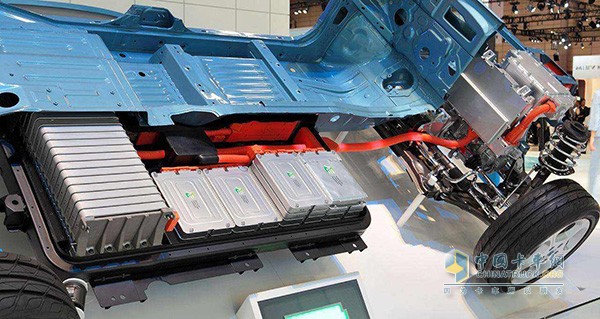 Recycling of power battery based on producers
Recycling of power battery based on producers
At the same time, the new energy vehicle power battery is mainly composed of lithium iron phosphate and ternary batteries, accounting for about 54% and 40% respectively. The retired lithium iron phosphate battery generally has a cycle life of 2,000 to 6,000 cycles, and the decommissioned ternary battery is only 800 to 2,000 times. It is obvious that the lithium iron phosphate battery is more suitable for the use of the ladder. However, due to factors such as the number of decommissioned batteries, raw material market conditions and corporate management level, the recycling revenue of lithium iron phosphate batteries is not as good as that of ternary batteries. At present, the industry regenerates 1 ton of scrapped lithium iron phosphate battery with a loss of about 400 yuan, and the recycling of the ternary battery has a certain profit margin. Therefore, enterprises need to recover lithium iron phosphate batteries.
In addition, there are problems such as low efficiency, immature technology such as battery remaining life and consistency assessment. In this regard, experts said that on the one hand, it is necessary to strengthen the supervision and management synergy and improve the supporting policy support system. For example, some countries have strengthened legislation, formulated technical specifications, adopted producer responsibility extension and deposit system to promote the recycling of batteries, and strengthened the supervision of battery manufacturers and waste battery resource recycling enterprises through licenses.
On the other hand, we must adopt diversified incentives to explore sustainable business models. For example, both the European Union and Japan use the producers as the main body to carry out the recycling of power batteries, and build a power battery recycling system through the automobile company's own sales and service network, which has achieved good results.
It can be foreseen that under the joint efforts of all parties, a sound recycling system will bring economies of scale, thereby promoting technological upgrading of enterprises and solving profit bottlenecks.
Reading volume: Source: Ministry of Energy Saving and Comprehensive Utilization Department: cold autumnRound Gutter Roll Forming Machine, Gutter Making Machine , Gutter Machine Price ,Rain Gutter Roll Forming Machine, Raingutter Roll Forming Machine, Rain Gutter Machine
Quick Detail
1.Suitable to process: Color steel plate
2.Width of the plate: 333mm
3.Rollers: 23rows
4.Dimensions: 10.7*1.35*1.51m
5.Power: 3+3kw
6.Rolling material: high grade 45# steel(plated chrome on surface)
7.Thickness of the plate:0.4-0.6mm
8.Voltage: 380V 50Hz 3phases
9.Material of the cutting plate: Cr12
10.Hydraulic: 40#
11.Processing precision: Within 1.00mm
12.Control system: PLC control
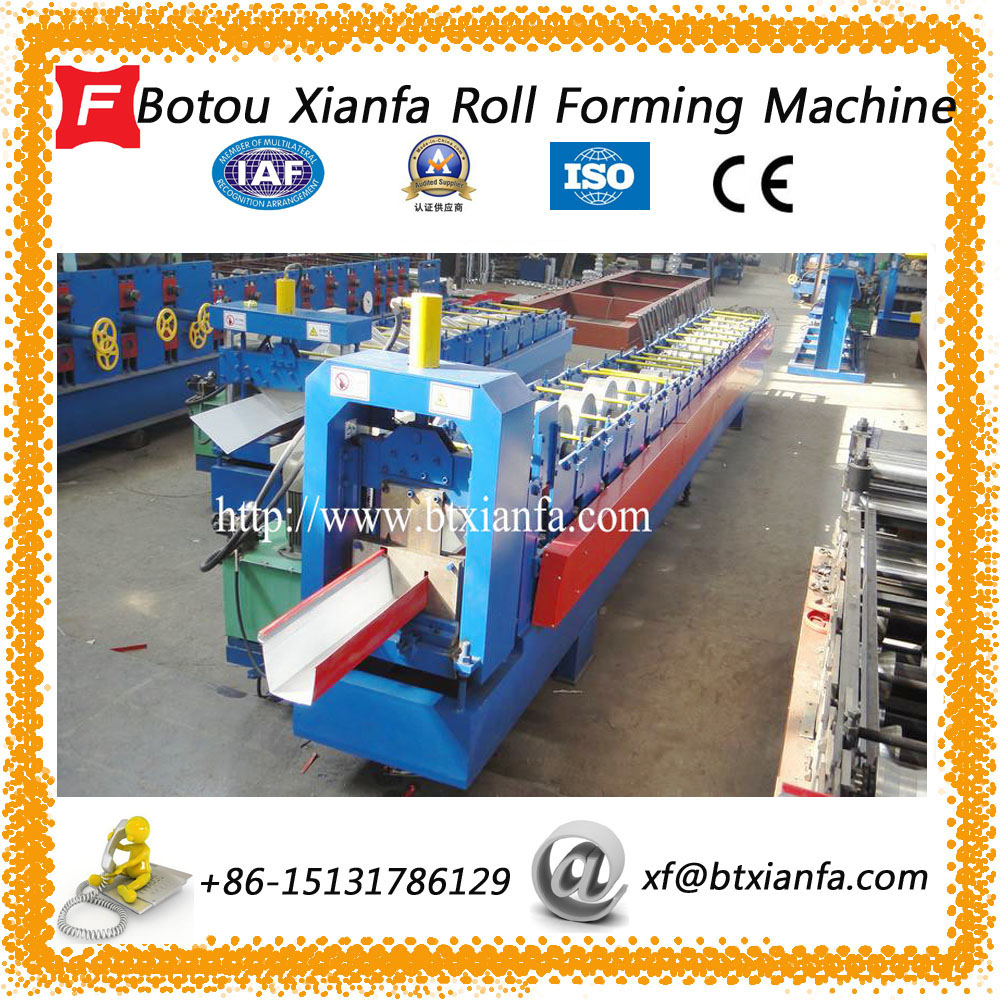
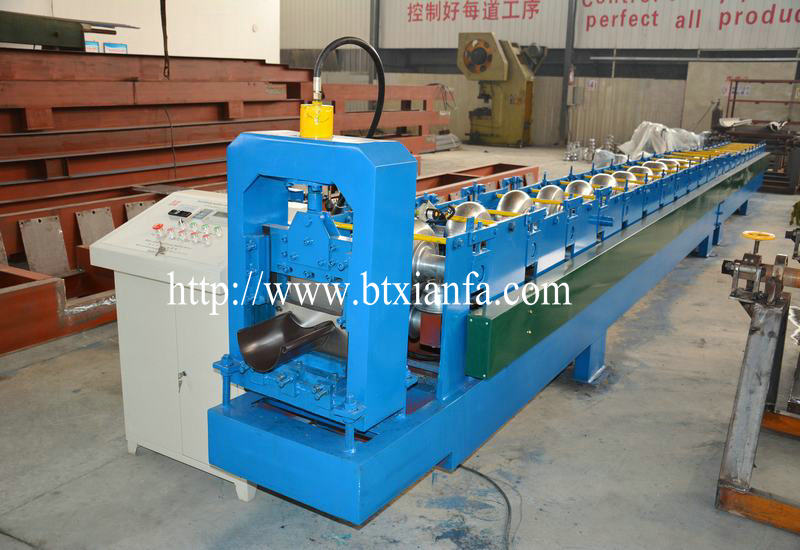
Round Gutter Roll Forming Machine
Round Gutter Roll Forming Machine, Gutter Making Machine, Gutter Machine Price,Rain Gutter Roll Forming Machine, Raingutter Roll Forming Machine, Rain Gutter Machine
Botou Xianfa Roll Forming Machine Factory , https://www.rollforming.nl
![<?echo $_SERVER['SERVER_NAME'];?>](/template/twentyseventeen/skin/images/header.jpg)